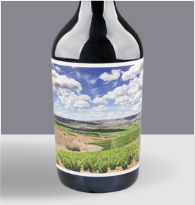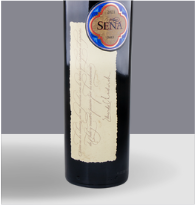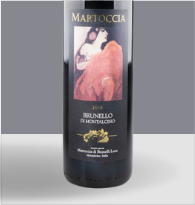When dealing with a subject as complicated and nuanced as wine, it’s reasonable to seek out ways to expedite the learning process – especially when you’re in the market for bottles. Wine ratings are immensely helpful in providing us with a quick and painless answer to the question “What should I drink,” but keep in mind that it’s possible to overlook valuable insight when we rely solely on scores without context. This article will examine the importance of wine ratings, as well as the meaning behind them.
Background: A Brief History of Wine Ratings
The most popular system currently used to judge the quality of wines is the 100-point scale, invented by the American critic Robert Parker in 1978 and adapted by many wine professionals throughout the world. Before this, other scales employed included the 20-point scale and star ratings, both of which are sometimes still implemented. Today, these systems assist many wine drinkers, from novice to expert, with making informed buying, selling, and drinking decisions.

Navigating the Different Rating Systems
According to Robert Parker, the 100-point system should be perceived like grades in school, where a 90 to 100 represents an A, an 80 to 89 represents a B, and so forth. The following explains the breakdown further:

Most wine rating publications using this system tend to focus on wines ranging from 80 to 100 points, as these are usually the most desirable to consumers. Barrel tasting scores are usually given in a range (i.e. 90 – 93) since the wines are not finished yet. Other symbols, such as +, -, or ? may appear in order to convey even more precision.
The 20-point system, on the other hand, has been adopted by other renowned critics, including the British wine authority Jancis Robinson. While it might occur to you to simply multiply these scores by 5 to arrive at a number out of 100, this system is a bit more intricate. On her scale out of 20 points, Robinson has defined the meaning of each point as shown here:

It should also be noted that while in school, the accumulation of points on a multiple choice test is based entirely on how many correct and incorrect answers there are, wine can often be more subjective. For example, you may prefer a wine with a 91-point score to another with 92 points. Both wines may be of outstanding quality, but the higher score is not necessarily a guarantee that you will like that wine more than the one with a lower score. Be aware, too, of the relationship between scores and price. A bottle with an 89-point rating that costs $10 could be an especially fine value to enjoy now, whereas a wine with 96 points may require extensive cellaring to perform at its peak.
Reviews: More Specific Information and Advice
Regarding specific wine criticism, the most useful portion of these judgments can be found in the written reviews themselves. These reviews typically describe the sensory properties of a wine, along with advice for when to drink it and other relevant information, like production methods, vintage notes, and background or historical context about the winery or producer. Reading reviews also gives you the opportunities to become familiar with the writing styles of critics and compare their opinions.

Additional Considerations
While many wines have ratings and reviews, others do not. Be sure to remember, though, no rating is not the same as a bad rating. Fortunately, there are lots of other fun ways to learn about wines, such as visiting wineries (or their websites), exploring WTSO.com, talking with wine professionals, reading books, and of course, tasting as much as possible. As for wines that have been reviewed, try to follow critics that share your tastes and, even more-so, those whose writing truly speaks to you.
Shop Bottles That a Wine Expert Drinks Himself!
At WTSO, our in-house expert Ed Miciolek is a seasoned wine enthusiast who believes every bottle has its own unique story to tell. With years of experience and a profound passion for wine, Ed has developed an exceptional talent for curating and selecting wines that highlight their unique qualities and characteristics. Recently, he reviewed a collection of 95+ point wines, carefully selected to guide wine enthusiasts in developing the palate of a professional sommelier.
WeatherEye Grenache Red Mountain 2020, 96 Pts
“WeatherEye’s Grenache from the famous Red Mountain AVA is super impressive to say the least! Grenache is well known to produce rich and powerful fruit driven wines, but making one and nailing it like WeatherEye did here deserves high marks. Ripe dark fruit and white pepper flavors with a smooth finish, it’s a beautiful expression of just how good a well produced Grenache can be.”
Seña Valle de Aconcagua 2021, 100 Pts
“A cuvee blend blend of 50% Cabernet Sauvignon, 27% Malbec, 17% Carménère, and 6% Petit Verdot, aged 22 months in 90% French oak barrels (70% new), and 10% in foudres. An iconic Chilean wine that offers a complex tapestry of black fruit, spice, and earth. Drinkable now but will age gracefully with proper cellaring. Chile at it’s absolute best!”
Martoccia Brunello di Montalcino 2018, 95 Pts
“A rich, powerful wine made from Sangiovese grapes. A heady bouquet of smoky berry fruits. Rich concentrated forest fruit flavors with ripe tannins and well balanced acidity. Ideal pairing for summer grilled red meats and a charcuterie board of aged cheeses and meats for you next summer soiree’.”






